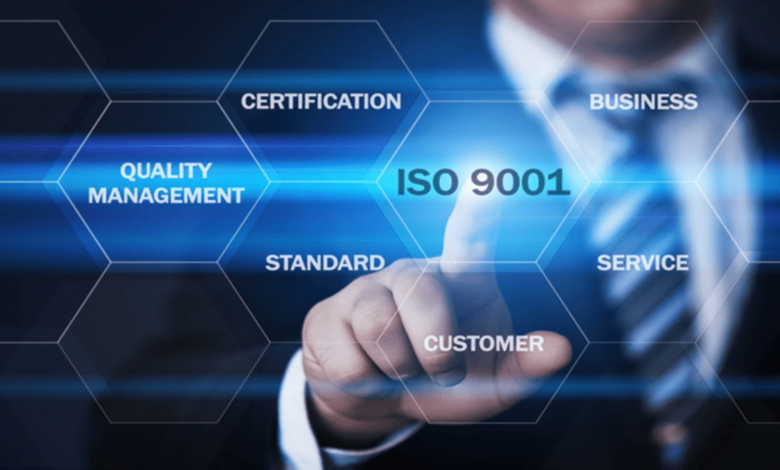
Understanding ISO 9001 Certification
ISO 9001 certification is a globally recognized standard that outlines the requirements for a quality management system (QMS). It provides a framework to ensure that organizations consistently meet customer needs and regulatory requirements while enhancing customer satisfaction. Understanding the principles and requirements of ISO 9001 is essential for businesses looking to achieve certification and improve their processes. The primary objective of ISO 9001 is to enhance customer satisfaction by ensuring that products and services consistently meet or exceed customer requirements and regulatory standards.
Benefits of ISO 9001 Certification
Obtaining ISO 9001 certification offers numerous benefits for organizations. It enhances credibility and trust with customers and stakeholders, leading to increased opportunities for business growth and expansion. ISO 9001 certification also helps streamline processes, reduce waste, and improve overall efficiency, resulting in cost savings and higher profitability. Additionally, it demonstrates a commitment to quality and continuous improvement, setting organizations apart from their competitors in the marketplace.
Streamlining Processes for Success
Implementing ISO 9001 principles can streamline processes within an organization, leading to improved productivity and performance. By identifying and eliminating inefficiencies, redundancies, and bottlenecks, businesses can optimize their operations and deliver products and services more effectively to customers. Streamlining processes not only enhances customer satisfaction but also boosts employee morale and engagement, fostering a culture of excellence within the organization.
Mastering Excellence with ISO 9001
Achieving ISO 9001 certification is more than just meeting a set of requirements; it is about mastering the principles of quality management and continuous improvement. By adopting a systematic approach to quality, organizations can drive excellence across all aspects of their operations, from product development and production to sales and customer service. Mastering ISO 9001 enables organizations to deliver consistent, high-quality products and services that meet or exceed customer expectations, ultimately leading to long-term success and sustainability.
Key Steps to Certification
Navigating the ISO 9001 certification process requires careful planning, implementation, and monitoring. Key steps include conducting a thorough gap analysis to identify areas for improvement, developing and documenting quality management processes and procedures, providing training and awareness to employees, conducting internal audits to assess compliance, and undergoing a certification audit by an accredited certification body. By following these steps diligently and with commitment, organizations can achieve ISO 9001 certification and reap the associated benefits.
Overcoming Certification Challenges
While the benefits of ISO 9001 certification are substantial, organizations may encounter challenges along the way. Common obstacles include resistance to change, lack of resources or expertise, and difficulty in aligning existing processes with ISO 9001 requirements. However, by addressing these challenges proactively and seeking support from experienced professionals, organizations can overcome barriers to certification success and realize their quality management objectives.
Success Strategies for ISO 9001 Certification
Success in achieving ISO 9001 certification requires a strategic and systematic approach. Organizations should prioritize leadership commitment, employee engagement, and continuous improvement throughout the certification process. It is essential to establish clear goals and objectives, allocate resources effectively, and communicate regularly with stakeholders to ensure alignment and support. By leveraging best practices and learning from past experiences, organizations can develop a roadmap to certification success and position themselves as leaders in their industry.
Maximizing the Value of ISO 9001 Certification
Achieving ISO 9001 certification is a significant accomplishment, but the journey doesn’t end there. To truly maximize the value of certification and drive ongoing improvement, organizations must embrace a culture of quality and continuous learning. Here’s how:
1. Continuous Improvement:
ISO 9001 is not a one-time achievement; it’s a commitment to continual improvement. Organizations should regularly review and assess their processes, seeking opportunities for refinement and optimization. By embracing a culture of continuous improvement, businesses can stay ahead of evolving customer needs and industry trends, driving innovation and growth.
2. Customer Focus:
At the heart of ISO 9001 is a focus on meeting customer requirements and enhancing satisfaction. Organizations should actively solicit feedback from customers, monitor satisfaction levels, and respond promptly to any issues or concerns. By prioritizing customer needs and expectations, businesses can build long-lasting relationships and foster loyalty and advocacy.
3. Employee Engagement:
Engaged employees are essential to the success of any quality management system. Organizations should empower employees to take ownership of quality and contribute their ideas and insights for improvement. Providing training and development opportunities can enhance skills and knowledge, fostering a culture of accountability and teamwork.
4. Data-Driven Decision Making:
Data is a powerful tool for driving informed decision-making and continuous improvement. Organizations should collect and analyze relevant data to monitor performance, identify trends, and make evidence-based decisions. By leveraging data effectively, businesses can identify areas for improvement, measure progress, and drive positive change.
5. Leadership Commitment:
Leadership plays a critical role in championing quality and driving organizational change. Senior management should demonstrate visible commitment to ISO 9001 principles, actively participating in quality initiatives and providing resources and support. By leading by example, executives can inspire confidence and foster a culture of quality throughout the organization.
6. Supplier Relationships:
Effective supplier management is essential to maintaining quality and ensuring the reliability of products and services. Organizations should establish clear criteria for supplier selection and performance evaluation, fostering collaborative relationships based on trust and mutual benefit. By working closely with suppliers, businesses can mitigate risks and enhance overall quality and performance.
7. Internal Audits and Reviews:
Regular internal audits and management reviews are critical for maintaining the effectiveness of the quality management system. Organizations should conduct thorough audits to assess compliance with ISO 9001 requirements, identify non-conformities, and implement corrective actions. Management reviews provide an opportunity to evaluate performance, set objectives, and drive continual improvement.
Conclusion:
Maximizing the value of ISO 9001 certification requires a proactive and holistic approach to quality management. By embracing a culture of continuous improvement, customer focus, employee engagement, data-driven decision-making, leadership commitment, supplier relationships, and internal audits and reviews, organizations can unlock the full potential of ISO 9001 and drive sustainable success in today’s competitive marketplace. With dedication, perseverance, and a relentless pursuit of excellence, any organization can realize the benefits of ISO 9001 certification and achieve its quality management objectives. With dedication, perseverance, and the right guidance, any organization can embark on the journey towards ISO certification and reap the rewards of a robust quality management system.




